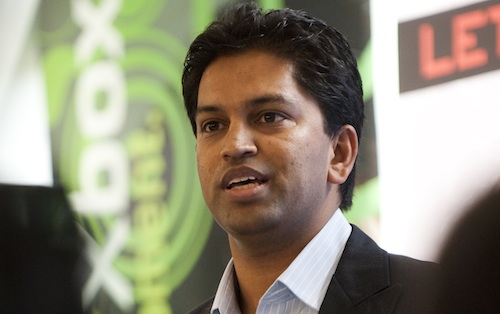Seacom hopes to complete the final leg of its undersea cable system by the end of June, ending its reliance on the Sea-Me-We 4 cable for connectivity to Europe.
The Sea-Me-We 4 system, which was damaged recently, had to be taken offline for several days late last month so repairs could be done to it.
Though Seacom’s cable extends through the Mediterranean Sea from Alexandria in Egypt to Marseille in France, and onward to London, it is still dependent on Sea-Me-We 4 for connectivity through the Gulf of Aden to Europe.
This is because it has had trouble securing the necessary permits from Saudi Arabia and Egypt to complete final construction of its own cable.
“When our [cable-laying] ships arrived outside Saudi Arabia, we couldn’t proceed with the work,” says Seacom’s head of product strategy, Suveer Ramdhani (pictured at top).
“We had secured the necessary permits but these were deemed irrelevant when our ships arrived.”
Securing transit permits from the Egyptians has also proved difficult, Ramdhani says.
Seacom has since got the go-ahead from Saudi Arabia and expects to have the final permits from Egypt soon. It expects to complete construction in the Gulf of Aden by the end of June.
Ramdhani says it’s still not clear what caused the recent outage on Sea-Me-We 4, which caused Internet connectivity problems for some fixed-line broadband subscribers in SA — mainly residential and small business users. Sea-Me-We 4 is one of the world’s longest cable systems, connecting Europe with South-East Asia via the Middle East.
Market talk is that an anchor partially damaged the Sea-Me-We 4 cable off the coast of Italy. It’s believed that cable consortium members couldn’t initially agree on a date to send a repair ship to fix the system as only some were affected by the problem.
To address the outage, Seacom routed certain customers via Indian cable systems and via Egypt Telecom’s TE North cable. But some Seacom customers elected not to take up this option because of additional fees they would have incurred.
Repairs to Sea-Me-We 4 were also delayed briefly because of urgent repair work that had to be done on the Sat-3 system along Africa’s west coast. It was agreed to delay the Sea-Me-We 4 repairs until Sat-3 had completed its work.
Ramdhani says that once Seacom’s cable construction is completed, it will have redundancy along multiple routes. It’s even struck up discussions with rival Eassy, a cable being built along Africa’s east coast on a similar but shorter route to Seacom’s cable system.
Seacom is also in discussions with Nigeria’s Main One about building a new, US$400m cable between Nigeria and SA and creating a fibre ring circumnavigating the African continent.
To date, Seacom has lit up 90Gbit/s of its capacity. The cable system has a design capacity of between 640Gbit/s and 1,3Tbit/s, depending on the segment of cable. However, this could be increased to between 2,6Tbit/s and 5,1Tbit/s in future thanks to improvements in fibre-optic technology. — Duncan McLeod, TechCentral
- Subscribe to our free daily newsletter
- Follow us on Twitter or on Facebook





